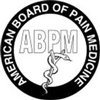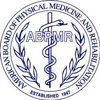
Elbow pain can be more than just an inconvenience — it can disrupt your daily life, limit your range of motion, and even keep you from doing the activities you love. Whether it’s caused by a sudden injury, chronic arthritis, or repetitive stress from sports or work, physical therapy plays a vital role in reducing pain, improving function, and preventing future issues.
Understanding the Root of Elbow Pain
The elbow is a hardworking joint that connects the upper and lower arm, allowing for bending, straightening, and rotation of the forearm. Because of its frequent use, it’s vulnerable to a range of issues — from sprains and strains to arthritis and tendonitis, including tennis elbow and golfer’s elbow.
- Sprains involve overstretched or torn ligaments, often due to falls or direct impact.
- Strains affect muscles or tendons, typically from overuse or improper lifting.
- Tendonitis, such as tennis or golfer’s elbow, results from repetitive stress causing inflammation or microtears in tendons.
- Arthritis causes joint inflammation, stiffness, swelling, and reduced motion over time.
How Physical Therapy Provides Relief
Physical therapy addresses elbow pain at its root, combining healing modalities with targeted exercises that reduce inflammation, restore strength, and improve joint function.
1. Pain and Swelling Management
Therapists use modalities like moist heat to increase blood flow and ice therapy to reduce swelling. Alternating hot and cold soaks can also be effective, especially for arthritis-related pain. Compression sleeves may be recommended to ease inflammation.
2. Strengthening and Flexibility
Targeted exercises improve the strength of muscles surrounding the elbow, supporting the joint and reducing stress on inflamed or damaged tissues. Forearm strengthening, grip exercises, and gentle stretches help restore flexibility and stability.
3. Range of Motion Exercises
Gentle, pain-free range of motion activities prevent stiffness and promote circulation of healthy synovial fluid in the joint. This is especially beneficial for conditions like arthritis or after surgery to maintain functional mobility.
4. Joint Protection Techniques
Learning joint protection strategies can prolong joint health and reduce strain. This includes using the larger joints for heavy tasks, avoiding prolonged pressure on the elbow, and using adaptive equipment when needed.
5. Activity Modification
Physical therapists educate patients on how to move more efficiently — whether it’s adjusting sports techniques, using ergonomic tools, or correcting posture. This helps prevent compensatory injuries elsewhere in the body.
Specialized Treatments Beyond Exercise
If conservative therapy isn’t enough, additional treatments may be incorporated:
- Platelet-Rich Plasma (PRP) Therapy – Injections using your own blood components to stimulate healing.
- Ultrasound Therapy – Helps break up scar tissue and improve circulation in chronic tendonitis.
- Bracing or Splinting – Supports the elbow during healing and prevents further injury.
In chronic or severe cases, surgery may be required. Post-surgical physical therapy is essential to reduce swelling, regain range of motion, and rebuild strength.
Preventing Elbow Pain from Returning
Recovery doesn’t end when the pain stops. Prevention is key:
- Warm up and stretch before activities
- Strengthen forearm, shoulder, and core muscles
- Practice proper form, especially in sports like tennis or golf
- Avoid repetitive stress without breaks
- Don’t push through pain — rest when needed
Conclusion
Elbow pain doesn’t have to limit your lifestyle. Whether you're recovering from an injury, managing arthritis, or dealing with repetitive strain like tennis or golfer’s elbow, physical therapy offers a personalized, effective path to relief. With the right combination of strengthening, mobility work, joint protection strategies, and therapeutic treatments, you can reduce pain, restore function, and safeguard your elbow for the long run. Don’t let elbow pain sideline you — take control of your recovery and protect your joint health with expert guidance from a physical therapist.
Precision Pain Care and Rehabilitation has two convenient locations in Richmond Hill – Queens, and New Hyde Park – Long Island. Call the Queens office at (718) 215-1888 or (516) 419-4480 for the Long Island office to arrange an appointment with our Interventional Pain Management Specialists, Dr. Jeffrey Chacko or Dr. Sonny Ahluwalia.
Note: This article is for informational purposes only and should not be considered medical advice. Consult a healthcare professional for personalized recommendations.















